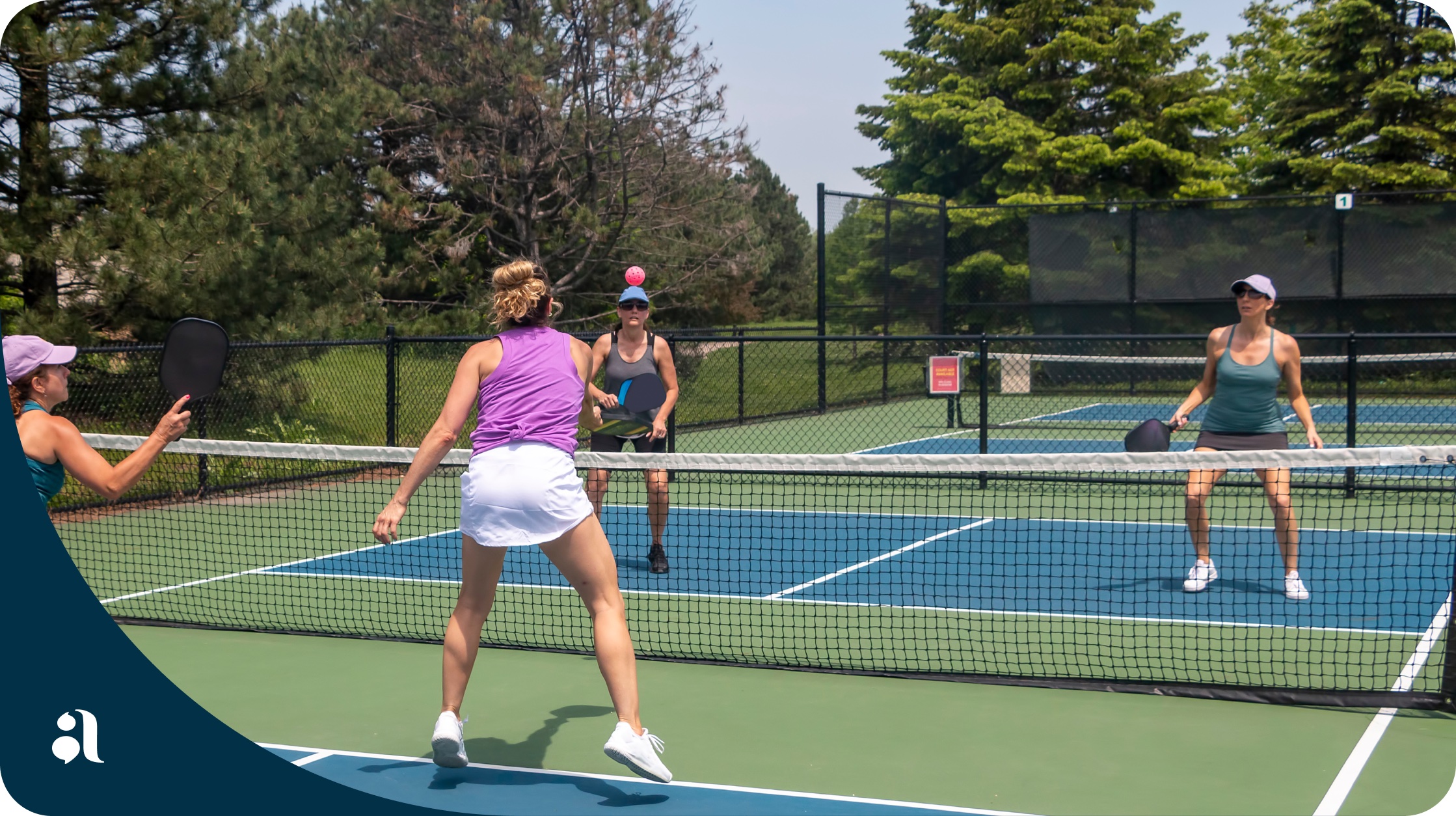
Benefits of an App for Managing Amenities in a HOA
Introduction: The Digital Evolution of HOA Amenity Management
The days when HOAs managed amenities with paper sign-up sheets, office drop-ins, or “first come, first served” rules are fading fast. Residents now expect convenience that mirrors the technology they use in their daily lives—whether they’re booking a vacation rental, ordering dinner, or joining a workout class. For community leaders, this shift is more than just about meeting expectations. It’s about improving efficiency, ensuring fairness, and creating a connected, thriving neighborhood culture.
A well-designed app for managing amenities in a HOA can serve as the central nervous system for these goals. It’s not simply a tool for booking; it’s a strategic asset that ensures every pool, tennis court, clubhouse, and event space is optimized for community enjoyment. And when the technology is built for master-planned communities where the HOA’s identity is front and center—like Alosant’s approach—it can amplify your community culture, unify residents, and support better decision-making for years to come.
Why HOAs Need an Amenity Management App Now More Than Ever
In recent years, HOA amenities have taken on new importance. With more people working from home, demand for daytime facility access has grown. Families are prioritizing local, walkable activities over distant entertainment options. And in some master-planned communities, competition for high-demand amenities can lead to friction among residents.
Without a centralized, transparent system, these challenges multiply. Staff waste hours juggling calls and emails, residents grow frustrated with unclear rules, and boards struggle to track usage patterns. An app for managing amenities in a HOA addresses these issues head-on, creating a shared source of truth for scheduling, communication, and policies.
Key drivers for adopting an amenity management app include:
- The surge in remote and hybrid work creates unpredictable amenity usage patterns.
- Higher expectations for digital convenience and real-time availability.
- The need for transparent rules and fair access to popular spaces.
- Rising operational costs, making staff time efficiency more important than ever.
According to the Community Associations Management 2024 industry report, more than 74 million Americans now live in community associations, many of which are increasing investments in shared amenities. As usage grows, the need for transparent scheduling and equitable access has never been greater.
The Core Benefits of an App for Managing Amenities in a HOA
A strong amenity management platform delivers more than convenience—it provides tangible operational and cultural benefits to the HOA. When residents can self-serve for reservations, staff can shift focus to higher-value community initiatives, and decision-making becomes more data-driven.
From a strategic perspective, an app for managing amenities in a HOA can:
- Streamline Scheduling – Residents view real-time availability and reserve spaces instantly, reducing booking conflicts and eliminating manual scheduling.
- Enforce Clear Policies – Terms and conditions are displayed and accepted before booking, ensuring everyone understands the rules.
- Improve Resident Experience – Push notifications, confirmations, and reminders foster trust and reduce no-shows.
- Provide Actionable Data – Boards can see what times are the most popular foramenities guiding to better investment and staffing decisions.For example, a community might assume their pickleball courts are always full because there’s a waitlist. But when they review the logs, they see that demand peaks only at certain times. This insight helps them create solutions to better use the courts during slower periods.
Beyond convenience, digital scheduling reduces conflict. Research from the Harvard Program on Negotiation shows that transparency in shared resource management significantly lowers disputes between stakeholders.
How Amenity Management Apps Build Stronger Communities
Community amenities are more than just physical spaces—they’re the settings where neighbors meet, friendships form, and memories are made. While it’s easy to think of technology as purely functional, a thoughtfully designed app for managing amenities in a HOA has the potential to strengthen these connections in ways that go far beyond scheduling.
When residents can easily discover, book, and enjoy community amenities, their engagement naturally grows. They’re more likely to join events, explore activities they haven’t tried before, and feel proud of their neighborhood. Over time, these positive experiences compound, leading to higher resident satisfaction, more active volunteer participation, and even increased property values.
Best practices for using amenity management apps to build community bonds include:
- Encourages Participation – Reduces barriers to entry by making it simple to see what’s available and reserve a spot in seconds.
- Fosters Fairness – Transparent booking processes reassure residents that everyone has equal opportunity to use shared spaces.
- Reduces Tensions – When the rules and schedules are clearly visible to all, potential conflicts are avoided before they start.
- Promotes Identity – Amenities are showcased as part of the community’s unique character, reinforcing pride and belonging.
By positioning the app as more than a logistical tool—and instead as a hub for shared experiences—HOAs can turn every booking into an opportunity to connect residents and strengthen the neighborhood’s social fabric.
Integrating Amenity Management into the Larger Resident Experience
An amenity booking tool is powerful, but when it’s siloed from the rest of the HOA’s communications, it only solves part of the problem. Residents shouldn’t have to bounce between different apps, websites, and email lists just to engage with their neighborhood.
That’s why Alosant’s app for managing amenities in a HOA lives alongside other vital community functions. It’s not just a booking calendar—it’s a single platform that connects news, events, local partnerships, and urgent alerts.
Benefits of integrated platforms include:
- One Login, One Destination – Residents don’t juggle multiple tools.
- Holistic Engagement – Events, news, and amenities are all visible in one place.
- Stronger Communication Flow – Urgent updates can be paired with reminders or booking confirmations.
- Local Business Support – Highlight community partners alongside HOA resources.
Key Features to Look for in an HOA Amenity Management App
Choosing the right technology for your community is about more than checking a box for “online reservations.” While many tools provide basic scheduling functions, a truly valuable app for managing amenities in a HOA is one that reflects your unique brand, enforces your policies, and supports long-term engagement. The goal isn’t just to make booking easier—it’s to choose a platform that feels like an extension of your community itself.
When evaluating options, HOAs should look beyond surface-level features and consider how well the platform will integrate into the community’s culture and daily life. The right app should be flexible enough to handle changing needs, intuitive enough for all residents to adopt quickly, and powerful enough to provide meaningful insights for decision-making.
Key features to prioritize include:
- Custom Branding – An app that displays your community’s name, logo, and color scheme reinforces identity and pride, ensuring residents see it as their platform—not a generic tool.
- Configurable Rules – The ability to tailor booking windows, capacity limits, and usage fees per amenity ensures the system aligns with your HOA’s policies, not the other way around.
- Integrated Messaging – Built-in push notifications, emails, and alerts keep residents informed about confirmations, cancellations, and community updates without relying on separate channels.
- Reporting Tools – Access to detailed usage reports helps boards track trends, identify underused amenities, and make data-driven investment decisions.
- Mobile Accessibility – A responsive, mobile-friendly design ensures residents can book and manage reservations anytime, anywhere—whether they’re at home or on the go.
By choosing a platform with these capabilities, HOAs can ensure their amenity management system serves as both a functional tool and a central piece of their community engagement strategy.
How Alosant Stands Apart
While many providers deliver a one-size-fits-all product, Alosant takes a different approach—acting as a collaborative partner from day one. We work closely with HOA boards,community management teams, and even residents to ensure the app for managing amenities in a HOA reflects the community’s unique brand, culture, and operational needs. The result is a platform that feels like it was built from within, not bolted on from the outside.
Core elements of the Alosant difference include:
- Built with You – Every feature is shaped by your policies and priorities, not generic defaults.
- Resident-Centric Design – Interfaces are intuitive, making adoption seamless for all age groups.
- Long-Term Support – We continuously refine and update the platform to match your evolving needs.
- Brand Amplification – Your community’s identity stays front and center while our technology works quietly in the background.
With Alosant, technology becomes more than a utility—it becomes a long-term asset that strengthens your community’s operations and its sense of connection.
Overcoming Common HOA Concerns About Technology
It’s natural for HOA boards to approach new technology with caution. After all, adopting an app for managing amenities in a HOA represents a change in how the community operates, and change can raise questions. The good news is that these concerns are not only common—they’re also entirely solvable with the right planning, communication, and partner.
Typical board concerns and how they’re addressed include:
- Learning Curve – Modern amenity management apps are built for quick adoption, with simple navigation andclear labels. Many providers, including Alosant, also offer live training and step-by-step tutorials.
- Resident Adoption – Launch campaigns, peer advocates, and visible benefits—such as reduced booking disputes—encourage residents to try the app and make it part of their routine.
- Cost – The investment often pays for itself through efficiency gains, reduced staff workload, fewer scheduling conflicts, and improved resident satisfaction scores.
- Security – Strong data privacy protections, encryption, and role-based permissions ensure sensitive resident information stays secure and compliant with best practices.
By addressing these concerns upfront, boards can move forward with confidence, knowing the technology will enhance—not complicate—the community living experience.
Training and Onboarding Residents for Successful Adoption
The success of any new technology hinges on adoption. Even the most feature-rich app for managing amenities in a HOA won’t deliver value if residents aren’t comfortable using it. This is where thoughtful onboarding becomes critical. A smooth, well-communicated rollout ensures residents understand not just how the app works, but how it makes their lives easier.
When introducing a new amenity management system, we’ve found that communities thrive when they treat launch day as more than a technical update—it’s a cultural shift. The goal is to create curiosity, build confidence, and inspire residents to make the app part of their daily routine.
Best practices for successful onboarding include:
- Launch Events – Host a kickoff gathering at the clubhouse where residents can see live demonstrations, ask questions, and set up their accounts on the spot.
- Quick-Start Guides – Provide simple, step-by-step instructions with visuals that walk residents through making their first booking.
- Peer Champions – Identify early adopters or tech-savvy volunteers who can help neighbors one-on-one.
- In-App Tutorials – Short, embedded videos that demonstrate common tasks, like reserving a tennis court or cancelling a pool booking.
By approaching onboarding as a community-wide event rather than a back-office update, HOAs set the stage for high adoption rates and long-term engagement.
Creating Amenity Access Policies that Balance Flexibility and Fairness
A booking app enforces rules—but it can’t create them. That’s the board’s responsibility, and it’s one of the most important elements in making the technology effective. Without clear, balanced policies, even the best app for managing amenities in a HOA can become a source of frustration.
Fairness is key. Residents need to feel confident that they have equal access to amenities, even during peak times. At the same time, flexibility ensures the system can adapt to changing community needs, whether that’s seasonal demand or special events.
Key considerations for building effective amenity access policies include:
- Reservation Limits – Setting a reasonable cap on bookings per week or month to prevent monopolization.
- Cancellation Windows – Allowing residents to release a spot in time for others to use it, paired with reminders to minimize no-shows.
- Special Event Exceptions – Temporarily adjusting rules to accommodate private parties or community-hosted activities.
- Feedback Loops – Regularly reviewing resident feedback and usage data to fine-tune policies over time.
By pairing a transparent policy framework with a capable booking platform, HOAs can achieve both fairness and efficiency—ensuring the app supports the broader goal of community harmony.
Customizing the Amenity Experience for Different Resident Groups
In any community, residents have diverse needs and preferences. A retired couple may value quiet, off-peak access to the fitness center, while a young family might prioritize weekend pool time. A thoughtful app for managing amenities in a HOA can support these differences through targeted communication, tailored booking rules, and seasonal programming.
Personalization isn’t about creating exclusivity—it’s about ensuring every resident feels the amenities were built with them in mind. By segmenting communications or programming, HOAs can highlight opportunities residents might otherwise overlook, driving higher engagement across the board.
Examples of customization strategies include:
- Demographic-Specific Booking Windows – Offering dedicated hours for activities such as “Family Swim” or “Adults-Only Lap Swim.”
- Seasonal Spotlights – Featuring different amenities in-app depending on time of year, such as indoor courts in winter or outdoor grills in summer.
- Targeted Notifications – Sending reminders about activities relevant to certain resident groups, like pickleball clinics for active retirees or holiday craft workshops for families.
- Inclusive Programming – Ensuring that every major resident segment sees events and activities that appeal to their interests.
When the app becomes a tool for personalization, residents feel seen and valued—strengthening their connection to the community and reinforcing the HOA’s role as a steward of shared experiences.
Getting Started with Alosant
Transitioning to a modern amenity management platform is smoother than most boards expect. Alosant’s onboarding process emphasizes collaboration, transparency, and ongoing support.
Our process includes:
- Kickoff Sessions – Define success metrics and configure app features.
- Resident Rollout – Education materials, training, and launch events.
- Continuous Optimization – Regular check-ins and feature enhancements.
- Dedicated Advisors – Long-term partners for strategic guidance.
For additional guidance on implementing community technology, the Urban Land Institute offers resources on placemaking and resident engagement strategies that can inform a successful rollout.
FAQs
What is an app for managing amenities in a HOA?
It’s a digital platform that allows HOA residents to book community amenities—like pools, gyms, and event spaces—online or via mobile, while giving boards tools to set rules, track usage, and communicate updates.
How does an app for managing amenities in a HOA improve fairness?
By showing real-time availability, enforcing reservation limits, and requiring all residents to follow the same booking process, it ensures equal access for everyone.
Can an app for managing amenities in a HOA save HOA staff time?
Yes. It automates reservations, sends reminders, and manages cancellations, freeing staff from manual scheduling so they can focus on higher-value community tasks.
Is an app for managing amenities in a HOA secure?
When built with encryption, secure logins, and role-based access, it protects resident data and ensures only authorized users can manage bookings or settings.
Further Reading
- The Value of a Lifestyle Management Platform for Master Planned Communities
- Master Planned Communities Need Better Event Management—Here’s How
- Mobile Access Control: Smarter Living Starts Now



